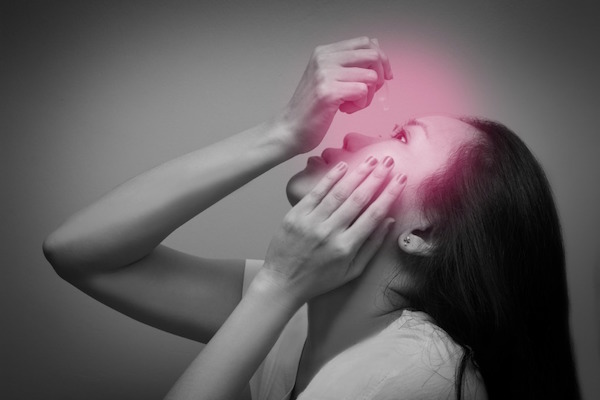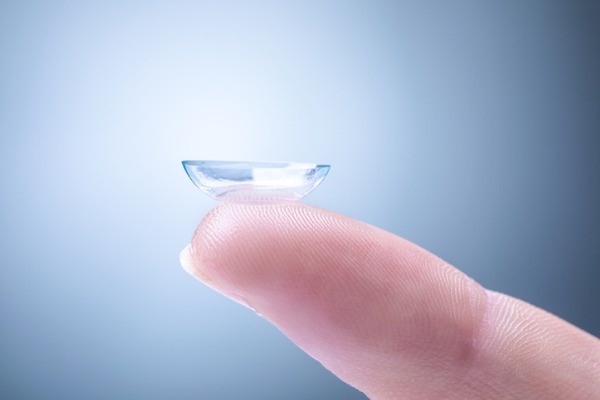
Dealing with Irritation and/or Redness of the Eyes
An irritated eyes situation can be painful and/or inconvenient to say the least, but treatment is quite simple in most cases
It’s safe to assume that most of us have woken up to a mysterious “redness” of the eyes at one point or another. Either we felt it coming on before we went to bed the previous night, or we noticed it first thing in the morning.
Redness and/or irritation can be painful and inconvenient to say the least, but treatment is quite simple in most cases. However, some symptoms are more intense than others and should be treated accordingly.
Conjunctivitis (also known as “pink eye”) means inflammation or swelling of the conjunctiva, which is the outer most layer of the white part of the eye. This can be the result of several different causes. In my experience, the most common causes of conjunctivitis are allergies (pollen or pet dander), or mild viral infections. If this problem is addressed in a timely manner, an over-the-counter eye drop should get you back to normal fairly quickly.
Symptoms And Causes:
If you find yourself dealing with an abnormal case of red-eye(s), you’ll most likely incur one or more of the following symptoms:
- An obvious redness in the eyes and/or eyelids (more so than usual)
- Swelling, Itching, and/or Tearing
- Light Sensitivity
- Blurry Vision
- Pain
- Discharge
If any of these symptoms are more intense than usual, you should have your eyes checked immediately. You should also be mindful of those around you because the situation may indeed be contagious.
The following are the main causes of conjunctivitis or any other abnormal redness of the eye(s):
- Allergies – Main symptoms are red, itchy eyes. Sometimes a ropy white discharge is produced. Patients typically have a history of seasonal allergies or adverse reactions to pet dander
- Dryness – Symptoms can be anything from red eyes, burning, and tearing, to a foreign body sensation, and blurry vision
- Chemical Irritant – This is a result of a substance getting into the eyes (maybe a cleaning product such as Lysol, or even an accident at work). Symptoms are very red eyes, tearing, blurry vision, and often times a lot of pain
- Inflammation – Can be a result of acute or chronic inflammation. Typically occurs in one eye, but can involve both eyes. Symptoms are very red eyes, light sensitivity, and pain
- Infection (from viruses and/or bacteria) – Infections are typically more uncomfortable than the others causes. Watery discharge will be visible in viral infections. Patients may also report a swollen lymph node and coinciding upper respiratory infection (or a common cold). Bacterial eye infections produce more discharge than tears. The discharge is typically greenish-yellow in color
- Broken Blood Vessel – As bad as it sounds, this situation is usually painless, yet the eye appears very red. A broken blood vessel can occur from taking blood thinners like aspirin. It can also be a result of straining or an injury to the eye.
- Contact Lens Problem – Over wearing contact lenses decreases oxygen to the eyes and causes them to appear very red. If pain is involved, the situation is likely more serious and can result in a corneal ulcer (infection) which requires immediate treatment.
The best way to diagnose your situation is to get a thorough examination from your eye doctor. Even with a detailed history, a proper diagnosis comes from current findings on the eye itself. Personally, I look for changes in the eye to determine the underlying cause of redness.
Also (and I know you’ve heard this one before), avoid touching your eyes as much as possible. As uncomfortable as this may be, it’s best not to rub your eyes when they itch because this will only cause more irritation or even an infection.
Getting To The Bottom Of It:
When redness is caused by allergies, the best treatment is to avoid the allergen at all costs. Washing the eye area gently after exposure may help to avoid an allergic reaction. If that’s not enough, over-the-counter artificial tears will help to eliminate some symptoms. It’s best to choose a preservative-free drop in order to avoid an additional reaction (such as an allergy to a specific preservative). My recommendation for this is the Refresh™ brand of products. Combination anti-histamine/mast cell stabilizer allergy drops like Zaditor™ should also work well when artificial tears aren’t enough. Most over-the-counter antihistamine/mast cell stabilizers can be taken two times daily until symptoms resolve.
When the underlying cause of redness is inflammation or infection, a medication will likely be prescribed by your doctor. Bacterial infections are usually treated with anti-biotic eye drops, while viral infections are treated with a cool compress and/or artificial tears until the virus runs its course.
Non-painful contact lens induced redness can usually be resolved by simply leaving the contacts out of the eyes for several days. However, if there is eye pain or blurry vision, prescription medication may be required and you should see your eye doctor immediately.
A broken blood vessel doesn’t require any treatment at all. It will usually resolve within 7 – 21 days. Cool compresses and preservative free artificial tears can be used for comfort, but they will not help resolve the redness any faster.
Dry eye redness requires a more detailed treatment approach. However, an easy over-the-counter eye drop to try first is preservative-free Refresh Plus™. I recommend using artificial tears four times per day. If you’re experiencing no relief, follow-up with your eye doctor for additional treatment options.
If a chemical irritant gets into your eye(s) you should try your best to stay calm. If the situation is painful, you’ll most likely feel the need to rush to the emergency room, but this isn’t the correct action to take. First and foremost, you need to flush your eye(s) with saline or water for at least thirty minutes. After doing so, you should immediately seek treatment from a doctor.
Use Your Best Judgment:
Remember to always use your best possible judgment in every situation. Many causes of redness can be self-treated, but certain types of inflammation and infections which go untreated can result in permanent vision loss and damage to ocular structures.
If redness isn’t resolved within 24 hours, or if pain or vision loss occurs, you must seek your doctor’s care immediately. If there’s any doubt in your mind whatsoever, the best plan is to get your eyes examined.







